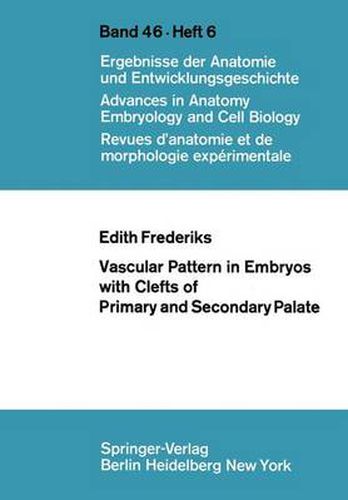Readings Newsletter
Become a Readings Member to make your shopping experience even easier.
Sign in or sign up for free!
You’re not far away from qualifying for FREE standard shipping within Australia
You’ve qualified for FREE standard shipping within Australia
The cart is loading…






This title is printed to order. This book may have been self-published. If so, we cannot guarantee the quality of the content. In the main most books will have gone through the editing process however some may not. We therefore suggest that you be aware of this before ordering this book. If in doubt check either the author or publisher’s details as we are unable to accept any returns unless they are faulty. Please contact us if you have any questions.
Most embryologists will say after Thoma, that bloodvessels follow the pattern set by organs and have no influence on organs in themselves. If this be true in normal development, what would we find in abnormality? If there be a certain vascular pattern in the developing face, will this pattern be essentially different in cases of clefts of primary and secondary palate? Or is Thomas statement also true here, and are the differences due to following the abnormal formation of the nasal and maxillary parts of the face? Could it be so that the unknown agents responsible for abnormal development act in a time of change in vascular pattern, take their chance just when there is a depletion in vascular supply? Or to the contrary, is there a specific vascular pattern which would allow causal haemato genic agents to reach the areas where we find abnormal development? To answer these questions we will have to compare vascularpatternsinnormal embryos and those with clefts, in stages as near as possible those in which the formation of the clefts takes place, which means for the primary palate the 9-12 mm. stage, for the secondary palate about the 35 mm. stage (Streeters Groups XV-XVII and XXI). Our research concerns normal embryos of 8, 11. 5, 12, 15, 17, 18, 25, 29, 30, 34, 35, 40 and 50 mm.
$9.00 standard shipping within Australia
FREE standard shipping within Australia for orders over $100.00
Express & International shipping calculated at checkout
This title is printed to order. This book may have been self-published. If so, we cannot guarantee the quality of the content. In the main most books will have gone through the editing process however some may not. We therefore suggest that you be aware of this before ordering this book. If in doubt check either the author or publisher’s details as we are unable to accept any returns unless they are faulty. Please contact us if you have any questions.
Most embryologists will say after Thoma, that bloodvessels follow the pattern set by organs and have no influence on organs in themselves. If this be true in normal development, what would we find in abnormality? If there be a certain vascular pattern in the developing face, will this pattern be essentially different in cases of clefts of primary and secondary palate? Or is Thomas statement also true here, and are the differences due to following the abnormal formation of the nasal and maxillary parts of the face? Could it be so that the unknown agents responsible for abnormal development act in a time of change in vascular pattern, take their chance just when there is a depletion in vascular supply? Or to the contrary, is there a specific vascular pattern which would allow causal haemato genic agents to reach the areas where we find abnormal development? To answer these questions we will have to compare vascularpatternsinnormal embryos and those with clefts, in stages as near as possible those in which the formation of the clefts takes place, which means for the primary palate the 9-12 mm. stage, for the secondary palate about the 35 mm. stage (Streeters Groups XV-XVII and XXI). Our research concerns normal embryos of 8, 11. 5, 12, 15, 17, 18, 25, 29, 30, 34, 35, 40 and 50 mm.